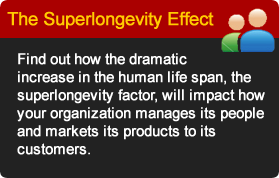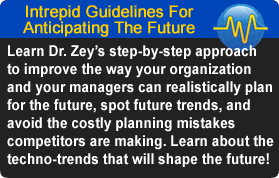PerfectSight (NETRA) Turns Droid, IPhone Into Eye Diagnostic Tool
PerfectSight (NETRA) Turns Droid, IPhone Into Eye Diagnostic Tool
July 16, 20101:42 PM MST
In Ageless Nation and The Future Factor, I described two broad medical revolutions that are vastly improving our lives. One of these is the Superlongevity Revolution, the radical extension of the human life span to 150 years and beyond. The other is the human enhancement phenomenon, the development of technologies that will enable humans to expand their mental and physical capabilities and enhance their physical appearance. Breakthroughs in fields such as biotechnology, genetic engineering, nanotechnology and bionics are the driving force behind both trends.
sify.com
As one would expect, professional biologists, physicists, geneticists and doctors are creating most of the key technologies driving these revolutions. However, as I predicted in Seizing The Future, advances in computer and communications technologies are enabling patients to participate more fully in their own medical treatment.
For example, the Internet now makes it possible for patients to gather as much, if not more, information about whatever ails them than their overworked physicians can. I have long advised people to become “health sleuths,” using the Internet’s cornucopia of information—medical journals, medical websites, patient support groups-- to discover all there is to know about their particular malady and the best treatments available, at home and abroad.
Technology is making it possible for patients to diagnose their physical condition. For years women have been able to self-administer pregnancy tests in the privacy of their home. Diabetics no longer have to visit a physician to measure their blood sugar content.
Now, researchers at MIT have taken self-diagnosis to a whole new level with a technology that is actually an “app” for the standard “smart phone.”
Most of us think of our smart phone as a tool to communicate with others via speech or text, play games, surf the internet, watch videos, and record events. Now these clever little gizmos will have another function. Your IPhone or Droid has just become a tool for medical diagnosis!
The NETRA (Near-Eye Tool for Refractive Assessment) enables IPhone and Droid owners to self-administer an eye exam on their mobile phones! Invented by India-born researchers along with the Media Lab of Massachusetts Institute of Technology, the "app" will be sold under the commercial name PerfectSight.
Part of the beauty of PerfectSight is the sheer simplicity of its operation. The user places the NETRA plastic device, actually a lens, on the cell phone's screen. When he looks into the lens, he will see two lines, one red and the other green. Using arrows on the phone the user will adjust the line to bring them into alignment. If the user sees the lines merge, his eyesight is fine.
The user must repeat the test eight times, after which software downloaded to the phone analyzes the test data and tells the person whether he or she has an eye problem such as astigmatism.
According to Ramesh Raskar, who developed PerfectSight with visiting professor Manuel Oliveira, this device will revolutionize the vision diagnosis process. "So imagine if you could use your mobile phone,” Raskar said, “Hold it right next to your eye, click a few buttons, say ‘calculate’ and get your prescription for your glasses."
The plastic pieces cost about US$1 to $2 now, but mass production could drive them down to only a few cents each. Amazingly, the test takes all of two minutes.
According to The World Health Organization, 2 billion people have refractive errors. Uncorrected refractive errors are the world's second-highest cause of blindness. PerfectSight can make eye-testing affordable and accessible for millions of people around the world. Not surprisingly, the team of researchers will make the tool commercially available first in Asia and Africa.
PerfectSight has profound implications for the field of telemedicine. While the inventors are using the IPhone as a diagnostic tool, it is also a communication device. So presumably after you measure your eye strength with PerfectSight operating through the IPhone, you could then forward that information stored on the smart phone from your IPhone to an ophthalmologist who can then prepare your prescription while you are traveling to his office.
The developers next hope to invent apps that can detect other eye problems, such as cataracts. But why stop at eye tests? It is conceivable that in the near future someone will invent Droid “apps” that can perform blood pressure tests and other diagnostics whose results can be immediately submitted to hospitals, physicians, and personal medical data banks for analysis.
Years from now we might look back at the invention of PerfectSight as a watershed event in the medical diagnosis field as well as the beginning of a new era in patient empowerment.
DR. ZEY'S PRESENTATION TOPICS



